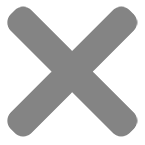Desert Sand—a soft, warm color that’s as calm as vast dunes and sunlit landscapes—is an earthy, neutral tone that’s both sophisticated and comfortable. Its hex code #EDC9AF puts it in the beige family with peach undertones. If you like neutral colors with natural beauty, Desert Sand might be your perfect fit.
What is Desert Sand?
Desert Sand is a muted, warm beige color inspired by the natural color of desert sands. It’s a mix of soft brown and peach, a calming and versatile color. While it’s in the beige family, Desert Sand is a bit deeper and richer than traditional beige.
Playabet Online Casino is an exciting platform that brings the thrill of a traditional casino experience right to your fingertips. With a wide array of games, including slots, table games, and live dealer options, players can enjoy endless entertainment from the comfort of their homes. The user-friendly interface makes navigation easy, ensuring that both novice and experienced players can find their favorite games effortlessly. For those looking to get started, Playabet offers generous bonuses and promotions, enhancing your gaming experience. Plus, their commitment to fair play and security ensures that all transactions are safe and protected. To dive into the action and explore everything Playabet has to offer, visit their official site here: https://playabet.or.ke/. Experience the excitement of online gaming and try your luck today!
It’s versatile so it’s great for design projects, fashion and interior spaces. It has a grounded and natural look that goes with many palettes while still being its own unique thing.
Marakumi Casino is quickly becoming a favorite among gaming enthusiasts, offering a vibrant selection of games that cater to every taste. One of its standout features is the user-friendly app, which allows players to enjoy their favorite games on the go. Whether you’re a fan of classic slots or prefer the thrill of modern table games, the Marakumi app has something for everyone. Among its exciting offerings, the Aviator game stands out with its unique gameplay mechanics and engaging graphics. Players can enjoy high-stakes fun as they navigate through thrilling rounds, making each session exciting and unpredictable. For more information about the app and to dive into the world of Marakumi Casino, visit https://marakumiapp.co.ke/. With its combination of accessibility and entertainment, Marakumi Casino is redefining the online gaming experience for players.
Complementary Colors
Desert Sand goes with many complementary colors. Whether you want a natural earthy palette or bold accents, it’s flexible.
- Complementary Color: Soft blue or teal tones balance out Desert Sand’s warmth.
- Triadic Colors: Desert Sand with muted sage greens and dusty rose shades.
- Tetradic Colors: Desert Sand with deep forest green, terracotta and navy for a more dynamic palette.
What Does Desert Sand Mean?
Colors have meaning and Desert Sand is no exception. This soft warm color means:
- Calm and Relaxation: Like the desert itself, it’s peaceful, open and spacious.
- Stability and Grounding: As an earthy neutral it’s strong, reliable and balanced.
- Warmth and Comfort: The peach undertones add a bit of coziness, so it feels welcoming and nurturing.
It’s a color that’s about natural beauty and simplicity, of wide open spaces and timelessness.
Desert Sand Across Cultures
Desert Sand is connected to nature, heritage and art across cultures.
- Middle Eastern Influence: The color is inspired by the vast deserts of the Middle East, symbolizing strength and timelessness. It’s used in traditional textiles and architecture.
- Western Minimalism: In modern Western design Desert Sand is celebrated for its minimal earthy look, often used in neutral palettes for homes and fashion.
- African Aesthetic: The warm beige of Desert Sand is the color of the Sahara and is used in African patterns, art and cultural designs.
- Japanese Wabi-Sabi: The natural and neutral of Desert Sand is Wabi-Sabi—a Japanese aesthetic that’s about simplicity, imperfection and earthiness.
This global appeal makes Desert Sand timeless and borderless.
Desert Sand Shades and Tones
Desert Sand is not a one color. It has many shades and tones from light sand to deeper warm tones. Here are some of the most popular shades of Desert Sand:
- Light Desert Sand: A lighter, creamier version for a more airy look.
- Warm Desert Sand: Peachy undertones for cozy warmth.
- Deep Desert Sand: Richer and more brown for accent tones or natural themes.
Desert Sand in Design and Real Life
Desert Sand is a favorite in fashion, design and interiors for its flexibility and calming nature. Let’s see where it works:
- Interior Design: Desert Sand is a classic in Scandinavian, Boho and modern farmhouse interiors. It looks great for walls, furniture and accents, for warm neutral spaces.
- Fashion: In clothing Desert Sand is a classic neutral that can be dressed up or down. It looks great with denim, black and other earthy tones.
- Web and Graphic Design: This color is perfect for natural themed designs, websites and branding that want to be elegant and reliable.
- Product Design: Whether it’s packaging, ceramics or textiles Desert Sand is a sophisticated understated look that appeals to minimalists and nature lovers.
Pair Desert Sand with white for a clean look or dark browns and greens for a rustic earthy feel.
Conclusion
Desert Sand is a gentle neutral that brings warmth, serenity and earthiness to everything. It’s flexible so it goes with many colors and styles, a timeless choice in design, fashion and more. Whether you need calm for your interiors, natural beauty for your wardrobe or a palette for a project, Desert Sand won’t let you down.

